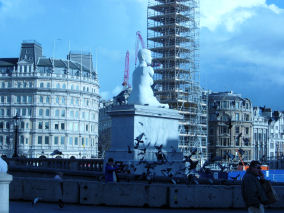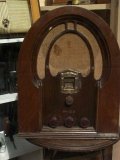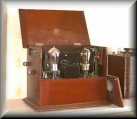SOUND BOX (your archive of digital sound effects)
| You need to collect sound effects (FXs) and store them in a digital archive. You can call this archive SOUND BOX. |
| Set up a system of naming the FXs - STANDARDIZING FILE NAMES - efficient system, as film |
| Keep a back up of SOUND BOX, as this is your resource for post-production. Teacher or similar has to keep this MASTER VERSION OF SOUND BOX. |
| Keep adding to SOUND BOX. Each student should have the task of searching for, and editing, new sound effects for SOUND BOX. |
| TEACHER - SECURITY: As students work from SOUND BOX, you will need to delete all the files and copy again from the MASTER VERSION OF SOUND BOX. This will be a regular procedure. Some of the files in SOUND BOX will get corrupted. When students are in postproduction, back up of SOUND BOX must be done daily. |
| There is a problem if new files are saved into SOUND BOX, and not into the back up. You have to set up a procedure for everyone using SOUND BOX. New files have also to be saved into a ADD TO BACK UP folder. |
| POSTPRODUCTION - PUTTING SOUND BOX TO WORK |

HERE IS THE PROCEDURE FOR COPYING AND PASTING A FILE FROM SOUND BOX
| NEVER remove a file from SOUND BOX (as CUT and PASTE). Always COPY and PASTE into your project, so that the files in SOUND BOX remain for everyone as an archive. |
| In your folder (for your project), Go - FILE - SAVE AS - SAVE AS TYPE - scroll down to choose the type. Examples of types of files - .wav files and .MP3 files. |
| .wav files are BIGGER and so have more detail of sound than MP3s. We can combine MP3s with WAVs in a project. Your project could well use other file types. |
|
You can save a .wav file as .MP3. You will then lose some of the quality of the sound of that file. MP3 is in a category called a 'lossy' file - from lose. It loses some quality. You CANNOT save a .MP3 file as a .wav file. You will only get silence, nothing. You cannot scale up. |
| Filmic - styles of radio drama directing and post-production which creatively relate to film for the FILMIC SYSTEM OVERALL approach. |

| PROBLEMS - LOGIC PROBLEMS - ATTRACTING THE WRONG ATTENTION - SLOPPY MIX - PRE-PRODUCTION - PRODUCTION - POSTPRODUCTION |
CONTINUING THROUGH THE SITE:
|
|
||
|
|
|
|
|
|
|
|
|
|
|
'moving camera' technique |
|
|
|
'Will you turn that music down!' |
| drop-ins | sound pictures |
|
| number the scenes carefully with a system | voice in the mind = interiorizing |
|
|
|



